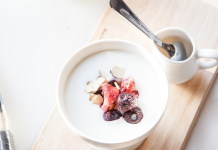If you have dry, scaly patches of skin on areas of the body typically exposed to the sun, or bumps on the arms and hands, you might have Actinic Keratosis (AKs), also referred to as Solar Keratosis.
This quick Q&A will tell what you need to know:
- What causes it?
This condition can be caused by sun exposure as well as UV radiation that occurs in tanning beds.
- What are the symptoms?
It can lead to patches, ranging up to several centimetres in size, of your skin feeling itchy and even sore. AKs can be unsightly and cause embarrassment and discomfort for a person who develops them. These skin lesions may also increase the risk of being diagnosed with skin cancer.
- Who is at risk?
AKs tend to affect people over the age of 40, men more than women, as well as people with lighter skin complexions. Those with conditions that cause the skin to become more sensitive to the sun’s UV rays (albinism, for instance) are also at a higher risk of developing AK’s.
- How to prevent it:
Stay out of the midday sun, avoid sun tanning and tanning beds, and apply sunscreen every day (even on cloudy days). Wearing sun-safe clothing is also a good idea when you know you are going to be outside for a while. Taking a health supplement to promote, enhance and maintain skin health can also help reduce the risk of developing pre-cancerous skin lesions.

- Can it be treated?
The key is to treat affected areas as soon as possible. Lesions can be treated by a dermatologist using cryotherapy and topical creams, to remove and destroy lesions with limited to no scarring taking place.
Another route is Lamelle Pharmaceuticals’ Nia-Sol Kit , which consists of a lotion, capsule treatment and a gel. Each of the items are designed to improve the appearance of red, flaky, and rough patches on sun-exposed skin. The topical lotion, which is used in conjunction with Nia Sol capsule supplementation, contains nicotinamide and photolyase, which help improve the appearance and recurrence of AKs. When taken at the recommended dose, Nia-Sol provides 500mg of nicotinamide, 10mg French Maritime Pine Bark Extract, and 100UI of vitamin D3 per day. The Nia-Sol gel is applied directly to the affected areas twice daily, in combination with Nia-Sol capsules, this has been proven to significantly improve the condition of the skin over a three-month period.






